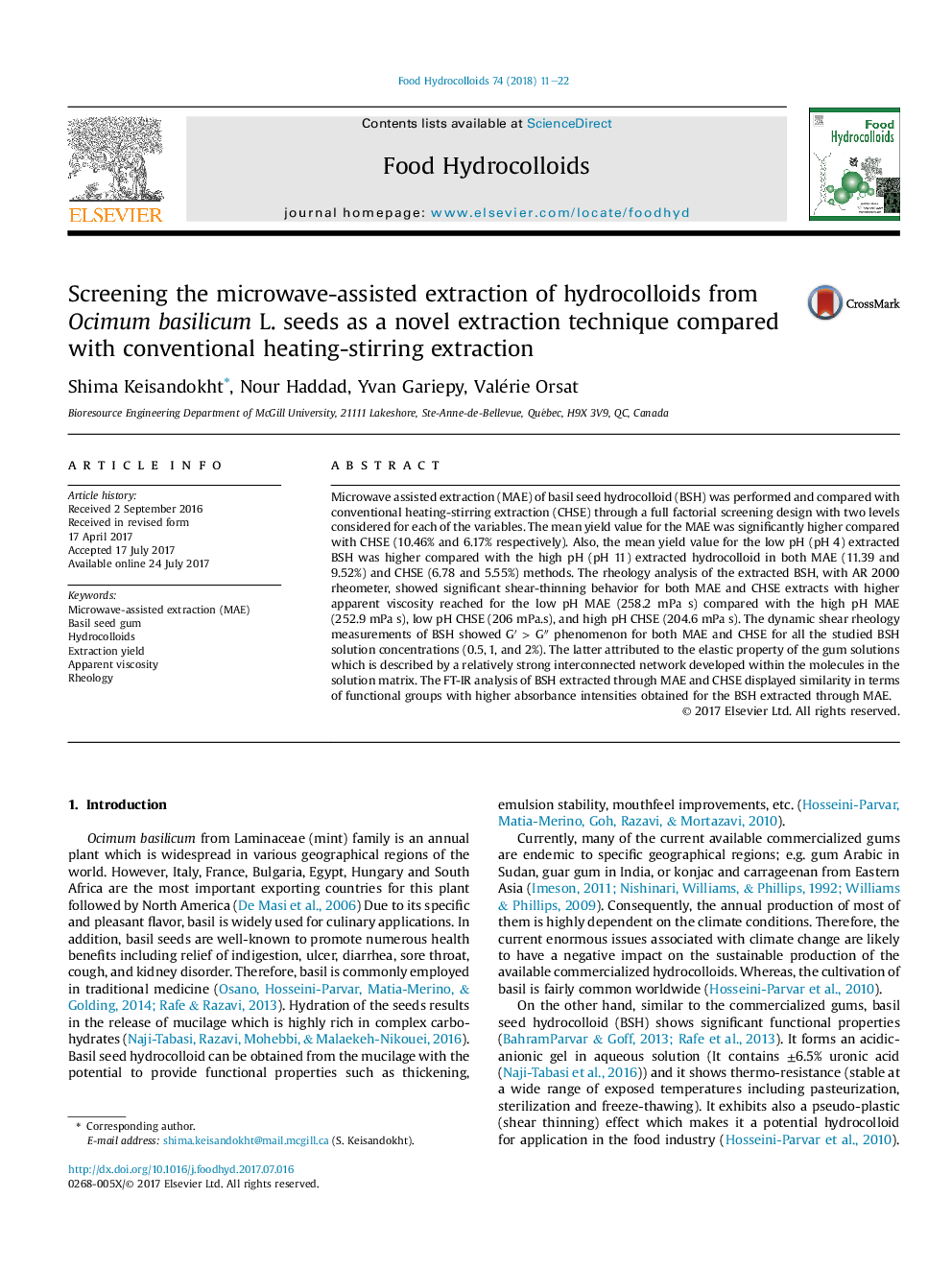| Article ID | Journal | Published Year | Pages | File Type |
|---|---|---|---|---|
| 4983718 | Food Hydrocolloids | 2018 | 12 Pages |
â¢Ocimum basilicum L. (basil) seeds as a novel source of food hydrocolloids.â¢Introducing microwave-assisted extraction (MAE) for basil seed hydrocolloid (BSH).â¢Obtaining higher extraction yield through MAE versus conventional extraction.â¢Obtaining comparable or enhanced rheological properties for BSH through MAE.â¢Obtaining higher FTIR absorbance intensities for BSH through MAE.
Microwave assisted extraction (MAE) of basil seed hydrocolloid (BSH) was performed and compared with conventional heating-stirring extraction (CHSE) through a full factorial screening design with two levels considered for each of the variables. The mean yield value for the MAE was significantly higher compared with CHSE (10.46% and 6.17% respectively). Also, the mean yield value for the low pH (pH 4) extracted BSH was higher compared with the high pH (pH 11) extracted hydrocolloid in both MAE (11.39 and 9.52%) and CHSE (6.78 and 5.55%) methods. The rheology analysis of the extracted BSH, with AR 2000 rheometer, showed significant shear-thinning behavior for both MAE and CHSE extracts with higher apparent viscosity reached for the low pH MAE (258.2 mPa s) compared with the high pH MAE (252.9 mPa s), low pH CHSE (206 mPa.s), and high pH CHSE (204.6 mPa s). The dynamic shear rheology measurements of BSH showed Gâ²Â > Gâ³ phenomenon for both MAE and CHSE for all the studied BSH solution concentrations (0.5, 1, and 2%). The latter attributed to the elastic property of the gum solutions which is described by a relatively strong interconnected network developed within the molecules in the solution matrix. The FT-IR analysis of BSH extracted through MAE and CHSE displayed similarity in terms of functional groups with higher absorbance intensities obtained for the BSH extracted through MAE.
Graphical abstractDownload high-res image (229KB)Download full-size image
